7 Fatal B2B Prospecting Mistakes Tech Companies Made in 2025

B2B prospecting mistakes cost tech companies millions in lost revenue last year. Despite investing in expensive tools and growing sales teams, many organizations watched their pipelines shrink while competitors thrived.
Why do some companies consistently generate qualified leads while others struggle? The answer lies not in having bigger budgets or fancier technology, but in avoiding fundamental prospecting errors. Unfortunately, many tech sales teams continue repeating these mistakes without realizing how severely they damage their results.
This article examines the seven most devastating B2B prospecting mistakes tech companies made in 2025. More importantly, we'll explore practical solutions to fix each problem, helping your team build a more effective outreach strategy that actually converts prospects into customers.
Sending Generic Messages
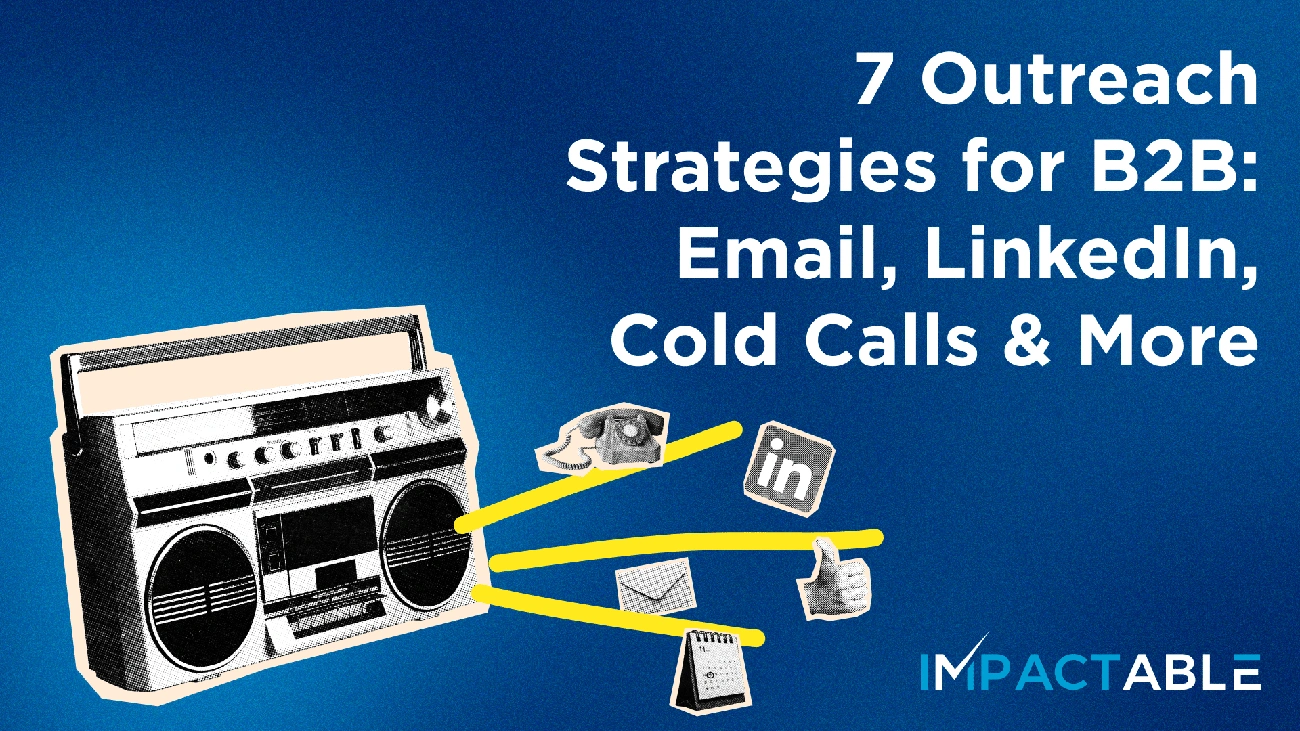
Image Source: Impactable
Generic messages flooded B2B inboxes throughout 2025, yet most were deleted without a second glance. Tech companies wasted countless hours crafting outreach that prospects immediately recognized as template-based and impersonal.
What sending generic messages means
Generic messaging occurs when tech companies send identical or near-identical outreach to multiple prospects with minimal customization beyond inserting a name or company. These messages typically contain broad statements about "flexible solutions" or "cutting-edge technology" without addressing specific prospect challenges. They often rely heavily on templated language, stock photos, and corporate jargon that fails to distinguish one vendor from another.
"It's more than just adding a name to an email," as one expert notes. Generic outreach treats all potential customers as if they share identical needs, challenges, and buying behaviors – an approach fundamentally misaligned with how B2B purchasing decisions actually happen.
Why generic messages fail in B2B tech
The numbers tell a clear story: response rates for generic outreach declined by over 40% in 2025 alone 1. This collapse isn't surprising considering 73% of B2B buyers now expect personalized experiences 2.
Generic messages fail for several critical reasons:
- They signal a fundamental lack of understanding about the prospect's business
- They erode trust and credibility before conversations even begin
- They waste valuable time pursuing poorly-matched leads
- They position your solution as a commodity rather than a strategic fit
Furthermore, 61% of B2B buyers specifically prefer vendors who offer personalized content 1, and 55% are more likely to return to vendors providing tailored experiences 1. Even more telling, companies that excel at personalization see 40% more revenue than those relying on generic approaches 2.
How to personalize outreach effectively
Effective personalization means addressing specific challenges and opportunities for each prospect. Start by:
- Researching thoroughly – Ten personalized emails generate more responses than 100 generic ones 3. Examine LinkedIn profiles, company websites, and recent news to identify relevant connection points.
- Implementing multi-channel strategies – Campaigns using three or more channels see a 287% higher response rate compared to single-channel efforts 2. Email sequences combined with phone interactions achieve 128% higher response rates 2.
- Balancing automation with human touch – Companies using AI for personalization are 7x more likely to hit sales targets 2, however, automation should enhance rather than replace genuine connection.
- Tailoring messages to specific industries and roles – Modify your value proposition based on the prospect's vertical, position, and stage in the buying journey.
The most effective personalization focuses on building relationships first rather than pushing for immediate sales. This approach demonstrates genuine understanding and positions your technology as the solution to specific, well-researched challenges.
Targeting the Wrong Audience
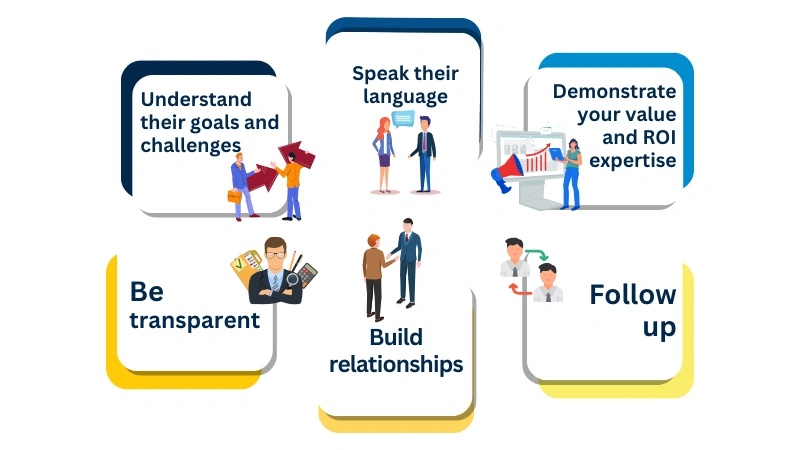
Image Source: Gartner
Even the best tech solutions fail when pitched to the wrong buyers. In 2025, countless tech companies wasted resources pursuing prospects who were never going to buy, regardless of how impressive their product demonstrations or how polished their pitches.
What poor targeting looks like
Poor targeting occurs when companies focus on prospects who don't match their ideal customer profile. Signs include:
- Pursuing companies without considering firmographic data like industry, size, and revenue
- Ignoring buying committees and focusing solely on C-suite executives
- Failing to understand prospect pain points and decision-making processes
- Using outdated or generic contact lists with low engagement rates
Digital B2B marketing now comprises nearly 50% of all B2B ad spending 4, yet many tech companies still cast excessively wide nets, hoping quantity will overcome quality issues.
Why targeting matters in tech prospecting
Targeting the wrong audience ranks among the most common demand generation mistakes causing low ROI, especially in SaaS and IT spaces where buyer journeys involve multiple stakeholders 2.
Effective targeting matters because sales and marketing teams waste resources reaching out to unqualified leads, resulting in lower conversion rates and missed growth opportunities 5. Moreover, today's tech buying committees typically include decision-makers, influencers, implementers, and end-users, each bringing unique perspectives 6.
Notably, over 80% of tech buyers seek insights outside the buying committee through blogs, forums, and surveys 6, making targeted content essential for reaching all stakeholders involved in purchasing decisions.
How to define and reach your ICP
An Ideal Customer Profile (ICP) describes companies that would benefit most from your product or service 7. Creating an effective ICP requires:
- Gathering key stakeholders from customer success, sales, and marketing teams
- Analyzing your most successful existing customers to identify common characteristics
- Understanding what problems your solution actually solves
- Using real CRM data instead of assumptions
Consequently, once your ICP is established, leverage quality contact data to segment your audience effectively, ensuring your messaging resonates with each segment's specific needs 5. Additionally, tools like LinkedIn Sales Navigator, intent data platforms, and CRM systems can help build dynamic, well-segmented audiences 2.
Pitching Too Early in the Conversation
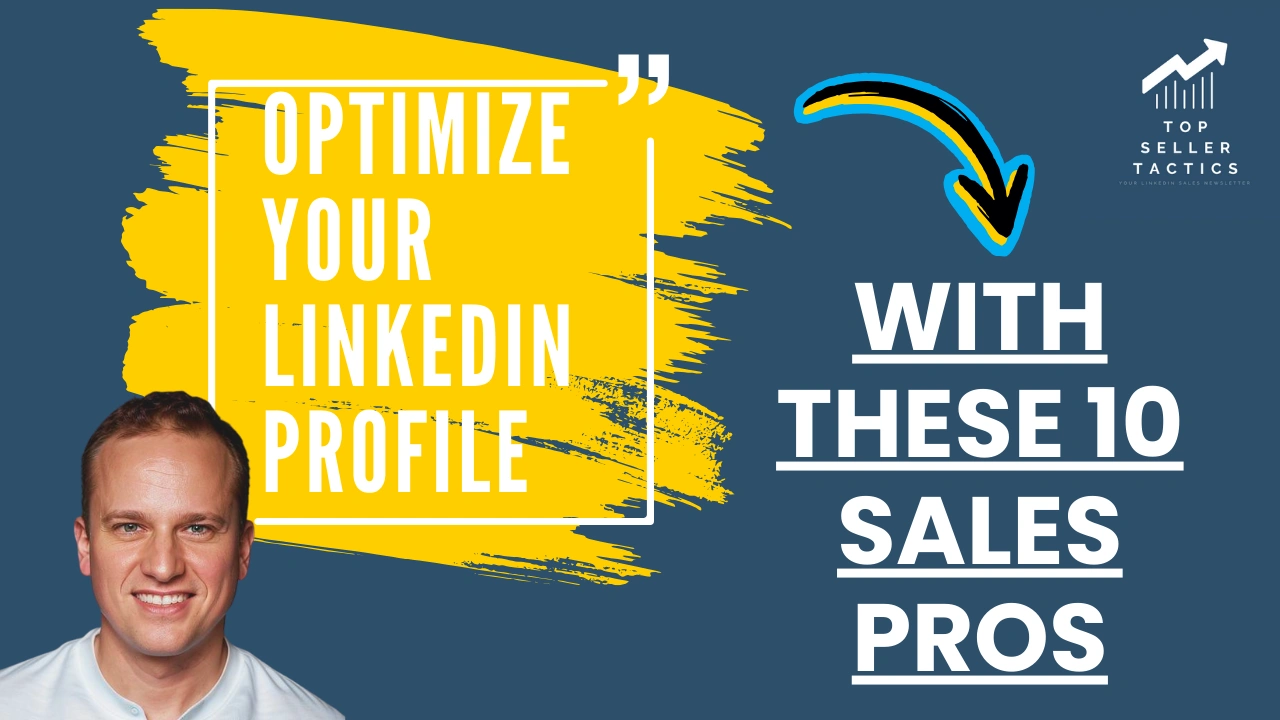
Image Source: Callbox
The timing of a sales pitch can make or break a B2B tech deal. Throughout 2025, many tech sales professionals damaged their prospecting efforts by rushing to sell before establishing value or understanding customer needs.
What premature pitching is
Premature pitching occurs when salespeople jump into product demonstrations or feature discussions immediately after minimal discovery. This common mistake happens when representatives:
- Start with brief pleasantries before launching directly into product features
- Talk about solutions before understanding client problems
- Push for a decision before establishing the full scope of challenges
- Focus on what they want to sell instead of what prospects need to solve
In essence, it's attempting to prescribe a solution before properly diagnosing the problem. Analysis shows only 5-6% of top-performing salespeople make exclusive sales pitches 8, as most successful representatives understand the importance of timing.
Why early pitching turns off prospects
Rushing to pitch severely damages B2B prospecting effectiveness. When sellers prematurely introduce solutions, buyers emotionally disengage even while nodding politely. Data indicates premature pitches can reduce close rates from 40% to 20% in complex IT sales 9.
Initially, prospects feel unheard and undervalued. Furthermore, without uncovering the full scope of challenges, salespeople limit potential solutions and weaken their business case 10. Today's B2B technology buyers actively resist pressure tactics 11, preferring representatives who take time to understand their unique situations.
How to build trust before selling
Building trust must precede selling, given that 88% of decision-makers only purchase when they view salespeople as trusted advisors 12. First, resist the urge to pitch and focus on understanding the problem completely.
Successful B2B prospecting requires asking layered questions that help buyers articulate their challenges. Subsequently, help prospects quantify the impact of their problems across different business areas. Finally, challenge assumptions respectfully and surface hidden obstacles through thoughtful discovery.
Ultimately, the most effective conversations occur when prospects see their problems clearly—possibly for the first time—creating natural urgency that makes the close almost inevitable 9.
Having a Weak LinkedIn Profile
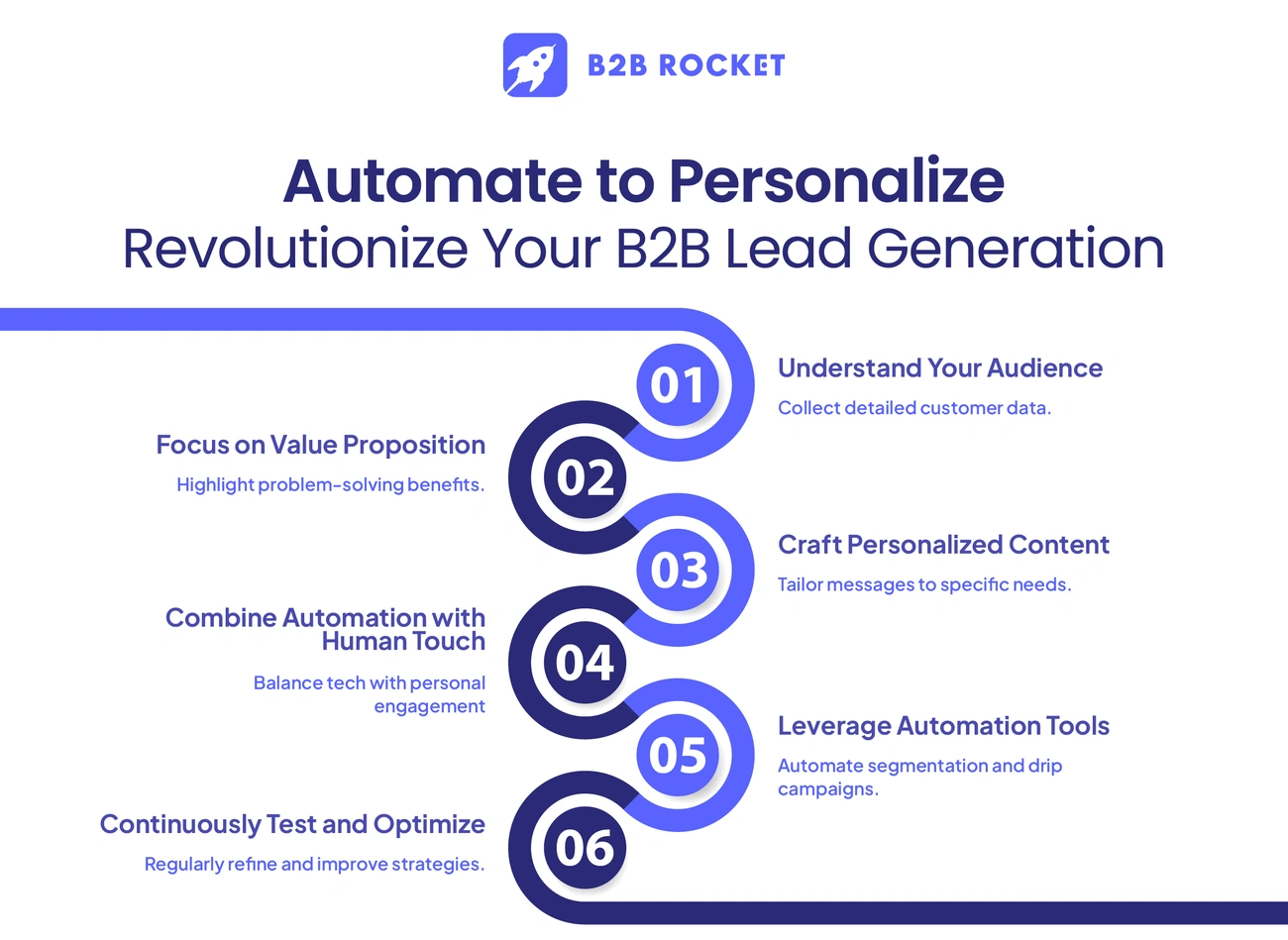
Image Source: LinkedIn
LinkedIn emerged as the primary battleground for B2B tech prospecting in 2025, yet many sales professionals undermined their efforts with surprisingly basic profile mistakes.
What a weak profile includes
In essence, a weak LinkedIn profile functions like a broken storefront for your professional brand. The most common weaknesses include:
- Generic headlines that simply state job titles instead of value propositions
- Missing or unprofessional profile pictures (profiles with quality photos receive 21 times more views 13)
- Empty or generic "About" sections that read like résumés rather than compelling narratives
- Experience sections that list duties instead of achievements
- Absent recommendations and minimal skill endorsements
- Default LinkedIn URLs with random numbers
- Little or no activity in terms of content sharing or engagement
First and foremost, these elements signal that you haven't invested time in your professional presence – a particular red flag for tech buyers seeking knowledgeable partners.
Why your profile matters in B2B
Your LinkedIn profile isn't just an online resume; it's a business asset and landing page for your professional brand 14. In fact, 75% of B2B buyers use social media in their purchasing decisions 15, with LinkedIn being four times more likely to drive business-related traffic to company websites than other social platforms 16.
Unlike consumer sales, B2B tech relationships rely heavily on trust and credibility. A polished profile helps prospects answer critical questions: Can you solve their problems? Do you understand their industry? Are you credible enough to engage with?
For tech sales professionals particularly, your profile serves as your elevator pitch, inbound lead generator, and personal brand platform all in one 17.
How to optimize your LinkedIn presence
To transform your profile into a B2B prospecting asset:
Create a compelling headline that communicates who you help and what problems you solve rather than just listing your title 17. Follow this with an "About" section that tells your story – explaining your journey, expertise, and the unique value you provide 18.
Similarly, showcase measurable results in your experience sections: "Closed $1.5M in ARR in FY2024" speaks louder than "responsible for sales targets" 17.
Above all, include a professional, well-lit headshot – profiles with quality photos get 14 times as many search results 16. Also, request recommendations from clients and colleagues to build social proof, and regularly share valuable, non-promotional content to establish thought leadership 18.
Accordingly, remember that employee profiles with optimized content generate three times more impressions and five times more engagement than company pages 19.
Over-Automating Outreach

Image Source: B2B Rocket
In the race to scale outreach efforts, many tech companies crossed a critical line in 2025: over-automating their prospecting process. The resulting damage to customer relationships proved costly and difficult to repair.
What over-automation looks like
Over-automation manifests when companies rely too heavily on technology to manage prospect interactions without human oversight. Common examples include:
- Auto-dialers that create awkward pauses before connecting prospects to unprepared reps
- Pre-recorded voicemails that save mere seconds but sacrifice authenticity
- Generic email sequences that group contacts into massive, impersonal campaigns
- Chatbots handling complex interactions better suited for human conversation
Indeed, these approaches prioritize quantity over quality, treating prospects as "just another number" in a database 20. Unfortunately, this mechanized approach fundamentally misaligns with how B2B relationships develop.
Why tech buyers hate robotic messages
Tech buyers immediately recognize automated outreach—and their response is overwhelmingly negative. According to research, 71% of customers prefer tailored experiences 21, yet automated messages often fail to deliver this personalization.
Meanwhile, studies show buyers feel emotionally disconnected when receiving obviously automated communications 22. For instance, when consumers believed communications were AI-generated, they expressed moral disgust and were more likely to switch brands 22.
Overall, robotic messages signal that companies value efficiency over understanding customer needs—a perception that erodes trust before conversations even begin.
How to balance automation with personalization
The solution isn't abandoning automation entirely but finding the strategic middle ground. Effective B2B prospecting teams:
- Automate backend processes while preserving human-led relationship building 23
- Use AI to analyze customer data and generate personalized recommendations 24
- Segment interactions—automate initial outreach but involve humans for complex discussions 25
- Maintain authenticity in automated communications through careful personalization 26
In essence, technology should enhance rather than replace the human elements that drive successful B2B relationships.
Neglecting Follow-Up Strategy
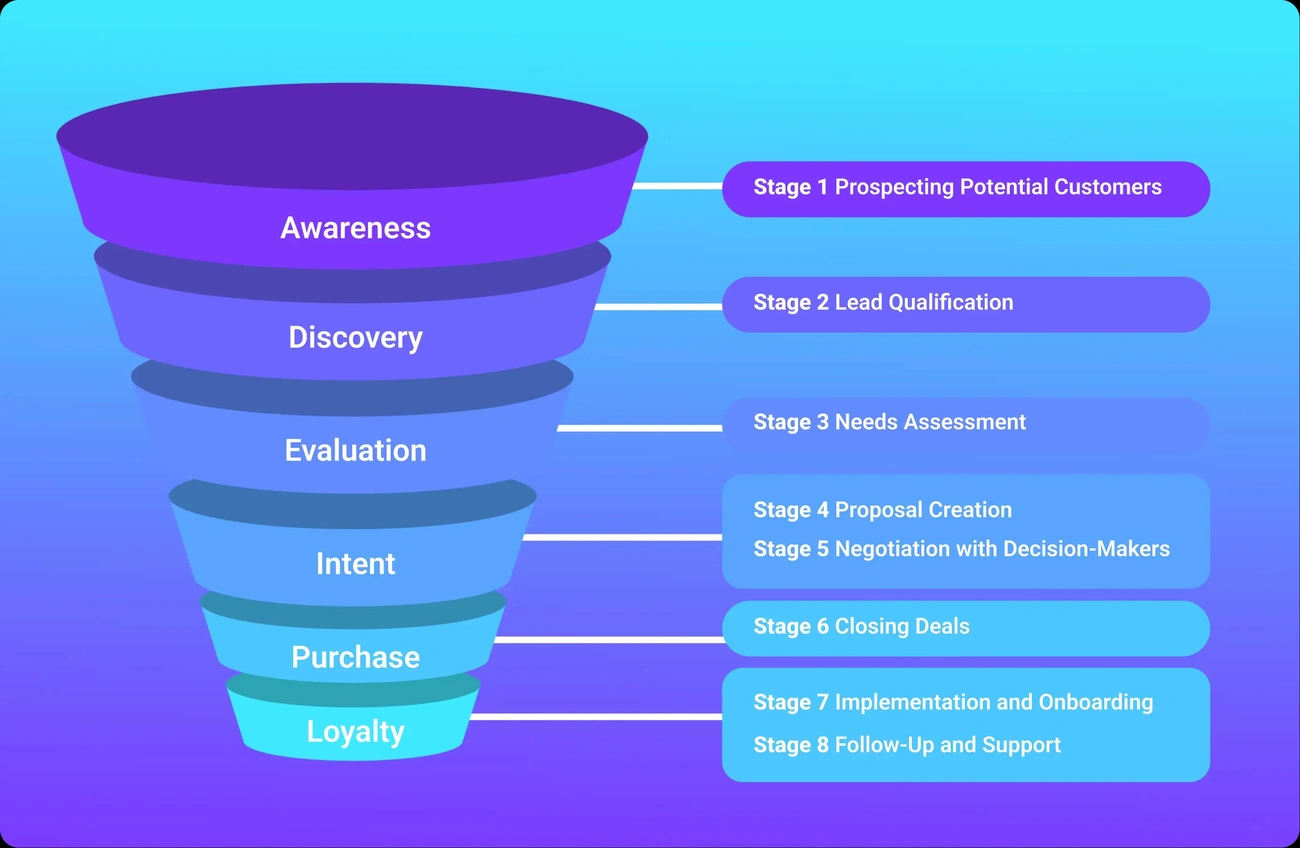
Image Source: Artisan AI
Follow-up strategies became the hidden differentiator among tech companies in 2025, yet many sales teams abandoned prospects after minimal outreach efforts.
What poor follow-up means
Poor follow-up typically involves inconsistent communication, generic "checking in" messages, and abandoning leads prematurely. The most damaging mistake? Giving up after minimal contact—44% of salespeople quit after just one follow-up attempt 27. Others follow up too infrequently or at the wrong times, with research showing that contacting leads after 24 hours drastically reduces response rates compared to within 5 hours 1.
Why follow-up is critical in B2B sales
The statistics paint a clear picture: 80% of sales require at least five follow-ups to close 28. Furthermore, 30-50% of sales go to vendors who respond first 29. Effective follow-up builds trust, gathers valuable insights about prospect needs, and significantly improves conversion rates—follow-up emails alone increase response chances by 11% 30.
How to create a smart follow-up sequence
Develop a structured cadence with gradually increasing intervals between touches. For optimal results:
- Time initial responses within 5 hours of first contact
- Use multiple channels—combining email, phone, and social media increases conversion rates by 287% 31
- Provide value with each touchpoint rather than simply "checking in"
- Personalize every interaction based on previous conversations
- Balance automation with human connection—automated emails generate 320% more revenue than manual ones 28
The best B2B prospecting teams understand when to persist and when to move on, typically setting a limit of 5-7 meaningful touches before sending a final breakup email 1.
Not Tracking Prospecting Performance
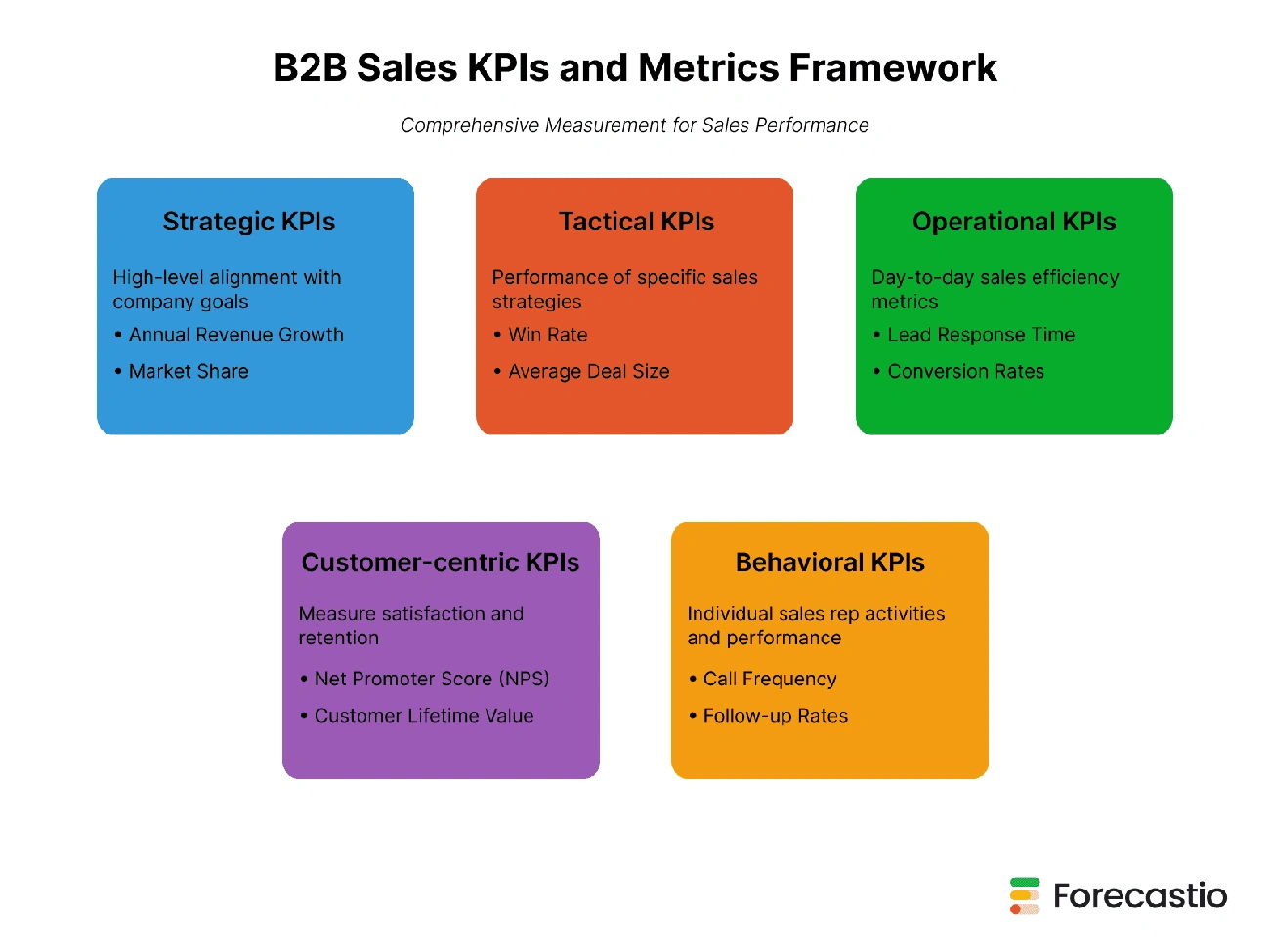
Image Source: Forecastio
Data invisibility crippled many tech sales organizations throughout 2025, with countless companies making decisions based on gut feelings rather than hard numbers.
What it means to skip tracking
Skipping performance tracking means operating without visibility into your prospecting efforts. Companies failing to track metrics cannot identify what's working, what isn't, and where to focus improvements. This blind approach leaves sales teams guessing which activities drive results, often wasting time on ineffective tactics while neglecting high-yield opportunities.
Why data matters in B2B prospecting
Data transforms B2B prospecting from guesswork into a strategic operation. Companies using data analytics consistently achieve their sales goals by measuring actual achievements against expectations 32. Furthermore, organizations prioritizing data-driven strategies will outpace those running on gut instinct by 2026 33.
Key metrics worth tracking include:
- Email open rates, click-through rates, and response rates
- Conversion rates across different stages
- Lead-to-opportunity conversion rate
- Customer acquisition cost
Markedly, 80% of sales require at least five follow-ups to close successfully 4, yet without tracking, teams cannot know whether they're hitting this threshold.
How to use metrics to improve outreach
Implement a structured approach to performance analysis:
- Set clear KPIs aligned with business objectives
- Use CRM analytics to segment audiences based on behavior
- Conduct A/B testing to refine your messaging
- Review metrics regularly—daily for lead flow, weekly for response rates, monthly for conversion trends 4
Essentially, what gets measured gets improved.
Conclusion
These seven prospecting mistakes collectively cost tech companies millions in 2025, yet they remain surprisingly easy to fix. Generic messaging, poor audience targeting, premature pitching, weak LinkedIn profiles, over-automation, inadequate follow-up, and lack of performance tracking all share a common thread – treating prospects as transactions rather than relationships.
Most B2B tech buyers expect personalized experiences that demonstrate genuine understanding of their challenges. Therefore, your prospecting strategy must prioritize building trust before pushing products. This approach requires thorough research, strategic timing, professional online presence, balanced automation, persistent follow-up, and data-driven decision making.
Though fixing these mistakes demands effort, the results speak for themselves. Companies that avoid these pitfalls consistently generate more qualified leads, shorter sales cycles, and higher conversion rates. Additionally, they build stronger customer relationships that lead to renewals and referrals.
The difference between struggling tech companies and thriving ones often comes down to these fundamental prospecting practices. Your team can dramatically improve results by addressing each mistake systematically. Rather than investing in expensive new tools or expanding headcount, focus first on refining your approach to connecting with potential customers.
Ultimately, successful B2B tech prospecting requires thinking beyond immediate sales targets. Teams that genuinely seek to understand and solve prospect challenges will naturally outperform those focused solely on transactions. Take time to assess your current prospecting strategy against these common mistakes – your pipeline will thank you.
References
[1] - https://www.custify.com/blog/saas-lead-follow-up-mistakes/
[2] - https://demanzo.com/common-mistakes-b2b-tech-companies-make-in-demand-generation-and-how-to-fix-them/
[3] - https://www.leadfeeder.com/blog/cold-email-templates-b2b/
[4] - https://outboundmaster.com/how-to-use-data-analytics-to-improve-sales-outreach/
[5] - https://www.callboxinc.com/lead-generation/how-to-avoid-b2b-saas-marketing-mistakes/
[6] - https://www.linkedin.com/business/marketing/blog/tech/targeting-technology-buyers-reaching-new-decision-makers
[7] - https://www.salesforce.com/blog/ideal-customer-profile/
[8] - https://www.avoma.com/blog/making-your-sales-pitch-work
[9] - https://www.thesellingcollective.com/post/pitching-too-soon-is-killing-the-close-rate-in-your-tech-b2b-deals
[10] - https://www.prosalesconnection.com/blog/premature-proposal-syndrome-how-to-solve-this-common-mistake
[11] - https://www.cmswire.com/digital-marketing/why-b2b-tech-deals-really-stall-and-what-marketers-can-do-about-it/
[12] - https://www.orum.com/blog/how-to-build-trust-in-sales
[13] - https://www.brafton.com/blog/social-media/linkedin-optimization-for-executives/
[14] - https://columncontent.com/linkedin-profile-optimization/
[15] - https://www.eastcoastcatalyst.com/blog/linkedin-b2b-best-practices-a-primer/
[16] - https://www.penguinstrategies.com/linkedin-lead-gen
[17] - https://www.pulserecruitment.com.au/best-linkedin-tips-for-tech-sales-pros/
[18] - https://www.sendtrumpet.com/blog-posts/update-your-linkedin-profile-essential-tips-for-sales-professionals
[19] - https://www.linkedin.com/top-content/technology/effective-use-of-social-media-in-tech/leveraging-linkedin-for-b2b-tech-marketing/
[20] - https://ebq.com/inside-sales-automation-risks/
[21] - https://woodpecker.co/blog/outreach-automation/
[22] - https://www.nyit.edu/news/articles/do-customers-perceive-ai-written-communications-as-less-authentic/
[23] - https://demandzen.com/b2b-sales-lead-generation-human-automation/
[24] - https://www.b2brocket.ai/blog-posts/human-touch-vs-ai-automation
[25] - https://agilebrandguide.com/finding-the-right-balance-between-automation-and-human-interaction/?srsltid=AfmBOoq6LbDX1I1KpJu1xa9Q5woslHnR_-YJPcizQ91en_vBxEF8eQ9u
[26] - https://aexus.com/balancing-b2b-sales-automation-and-authenticity/
[27] - https://www.wearesiete.com/en/blog/effective-follow-up-strategies
[28] - https://www.cognism.com/blog/sales-follow-up
[29] - https://www.phoneburner.com/blog/b2b-sales-follow-up-strategies
[30] - https://www.salesgenie.com/blog/follow-up-statistics/
[31] - https://martal.ca/follow-up-email-lb/
[32] - https://www.forbes.com/councils/forbesbusinesscouncil/2024/09/20/18-ways-businesses-are-using-data-and-tech-to-boost-their-sales-dev/
[33] - https://martal.ca/sales-kpis-lb/



